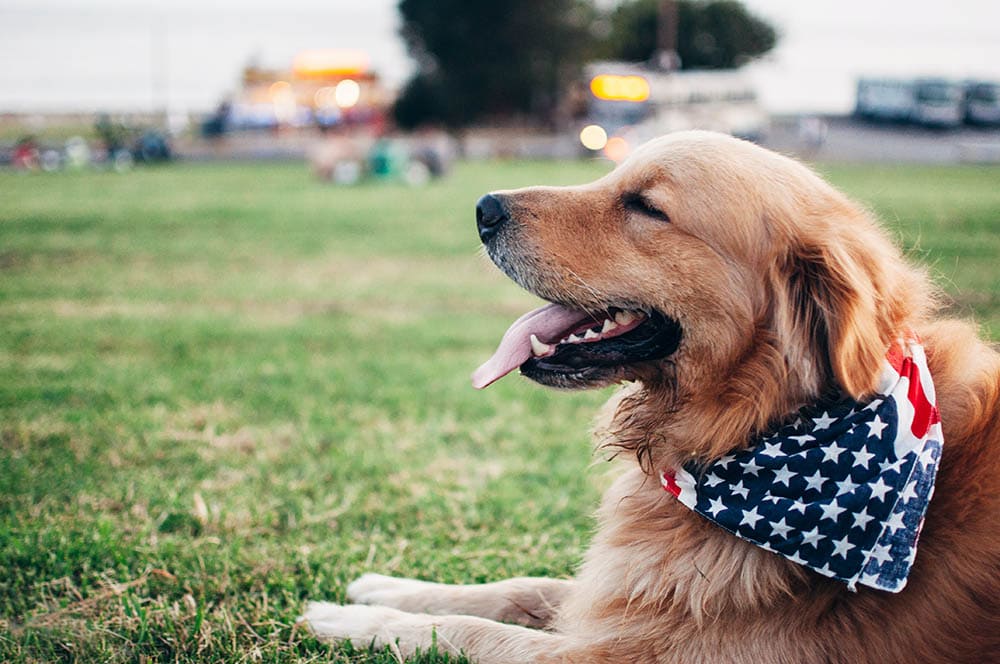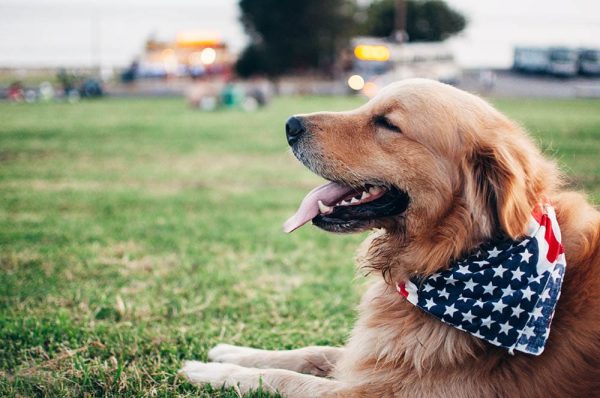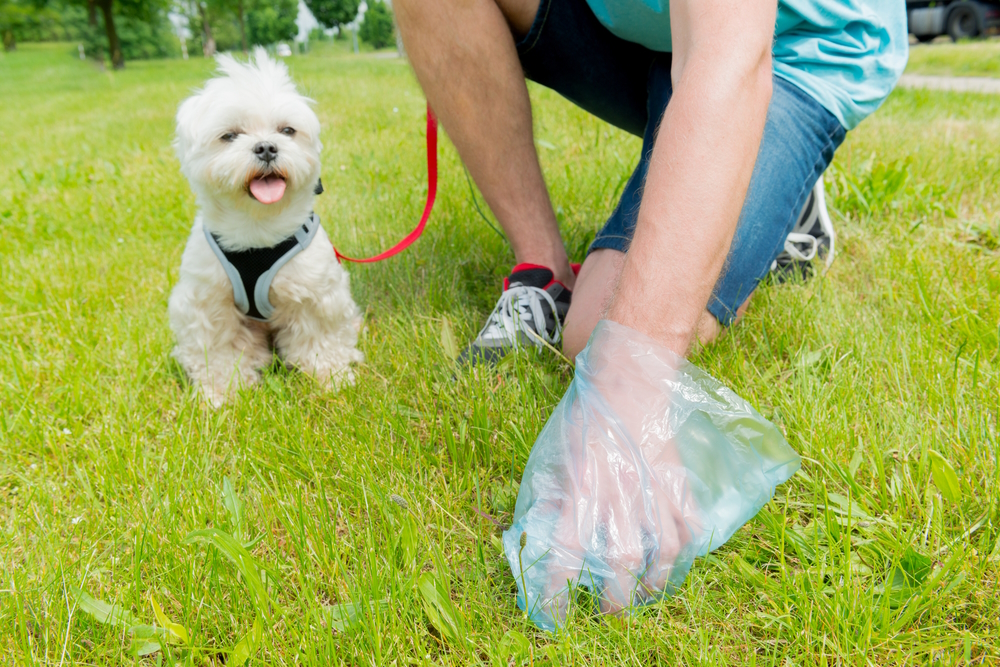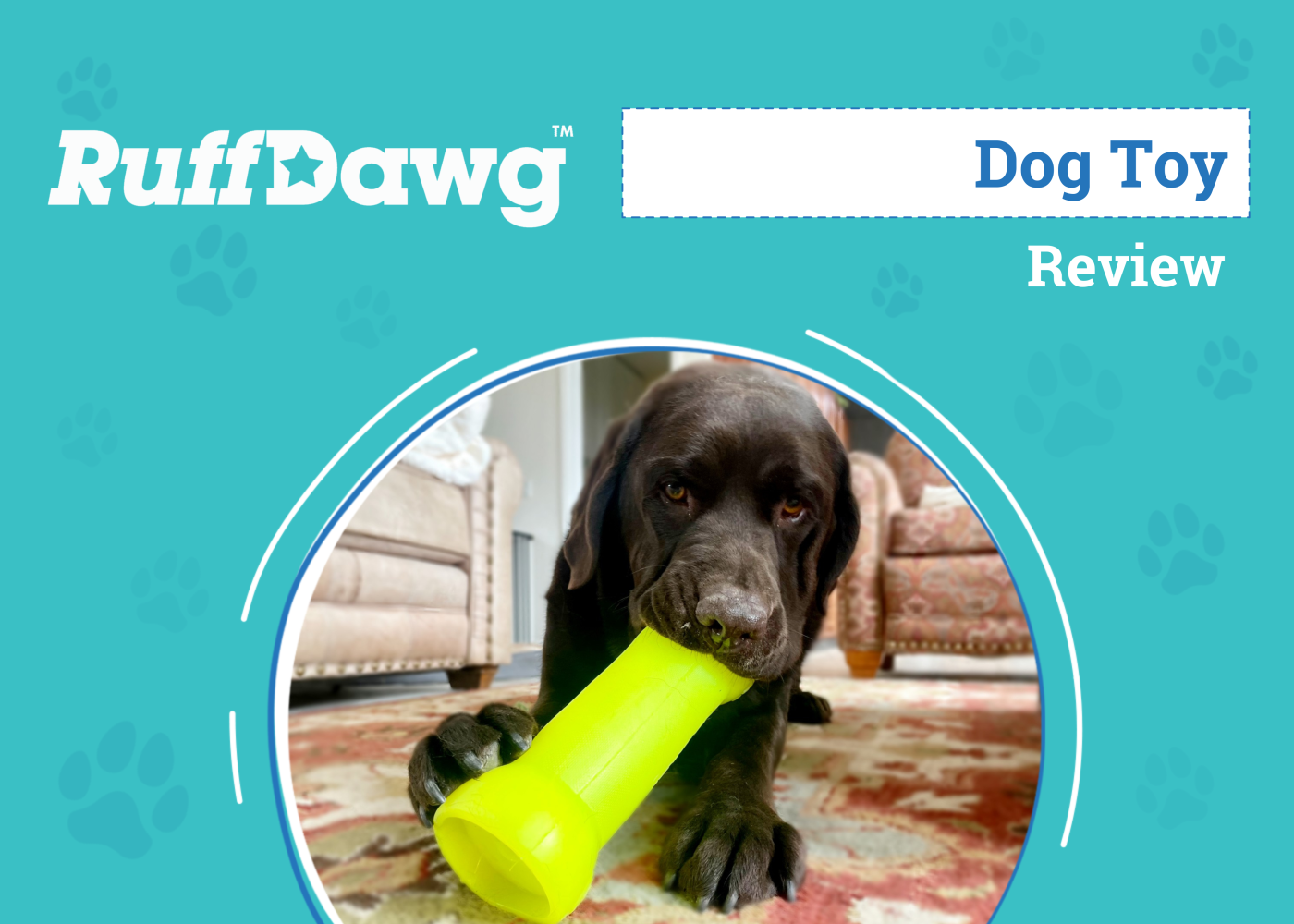Part of the fun of Christmas is doling out the Christmas apparel that you can wear only once a year. Many dog owners want to include their dogs in this tradition, and you can find plenty of pet stores that are well-stocked with Christmas dog apparel.
While some dogs enjoy wearing sweaters, others may feel uncomfortable and restricted. Bandanas may be a more suitable option for dogs that don’t like wearing clothes. Making your own Christmas dog bandana is a great way to make a bandana that fits perfectly with your dog’s measurements. Here are six beginner-friendly DIY Christmas dog bandana plans that you can try today.

The 6 Top DIY Christmas Dog Bandanas
1. My Golden Thimble DIY Christmas Dog Bandana
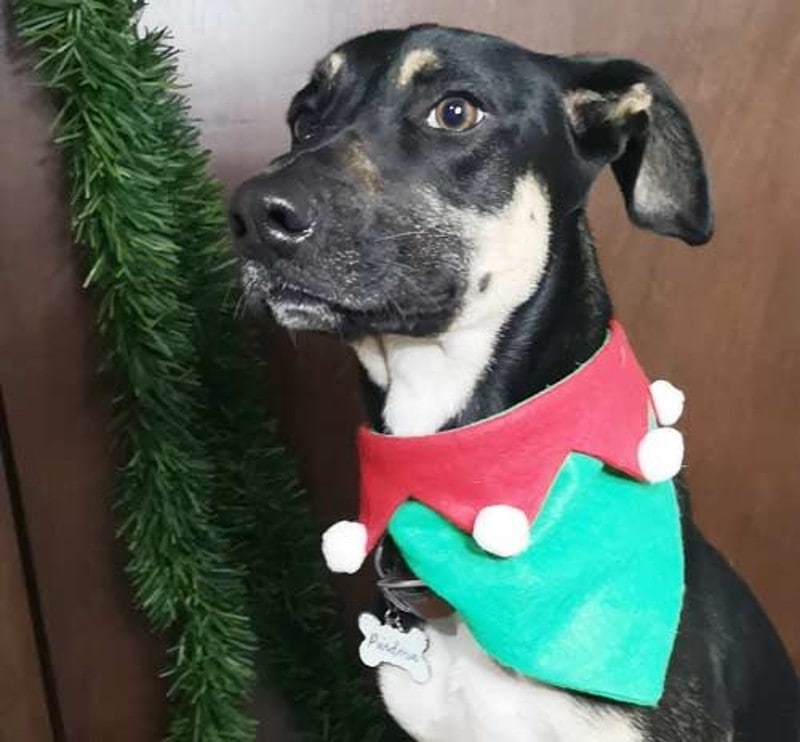
| Materials: | Fabric, pom poms |
| Tools: | Sewing machine, fabric shears, sewing pins, iron, bandana pattern |
| Difficulty Level: | Easy |
This DIY Christmas dog bandana is the perfect accessory for all of Santa’s little helpers. It has an adorable elf neckline, and you can add optional pom poms. This project has a free pattern and multiple sizes to fit all kinds of dogs.
The pattern and instructions are beginner-friendly, so as long as you know how to use a sewing machine, it should be fairly quick and easy to complete. You could also sew by hand, but it’ll take a considerably longer amount of time, especially if you’re making a bandana for a larger dog.
2. Cooking for Dogs DIY Christmas Dog Bandana
| Materials: | Christmas patterned fabric, pom poms, bells, dog collar |
| Tools: | Sewing machine, ruler, sewing pins, fabric shears, hot glue gun |
| Difficulty Level: | Easy |
This simple Christmas bandana is an excellent DIY plan for beginner sewers. All you have to do is measure the fabric so that it’s the same length as your dog’s collar. Then, you cut the fabric to the length of your choice and hem the edges to create a clean border.
The pattern includes a strip for you to insert your dog’s collar. So, the bandana will fit perfectly and reduce the appearance of wrinkles and folds. Once you complete the sewing, you can glue on Christmas embellishments, like bells and pom poms.
3. DIY Passion Christmas Dog Bandana and Stocking Stuffer
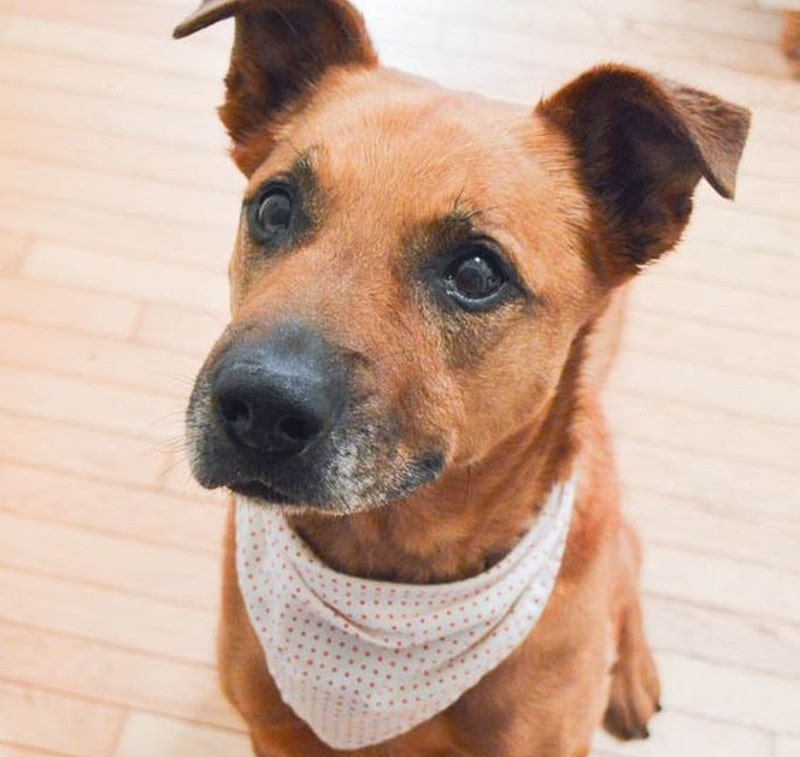
| Materials: | Christmas fabric, tissue paper, dog treats, googly eyes, string, pipe cleaners, pom poms |
| Tools: | Fabric shears, fabric glue |
| Difficulty Level: | Moderate |
This DIY bandana plan really includes your dog in the Christmas festivities. It includes instructions for making a quick bandana and a matching stocking stuffer. The bandana is a simple triangle cut, and you can clean up the edges by hemming them.
The matching stocking stuffer uses the same fabric and has instructions for creating a quick reindeer design. Overall, this is an excellent gift for your own dog, but it can also be fun party favors or small gifts for other friends that own dogs.
4. Golden Lucy Crafts Crochet Christmas Candy Cane Dog Scarf
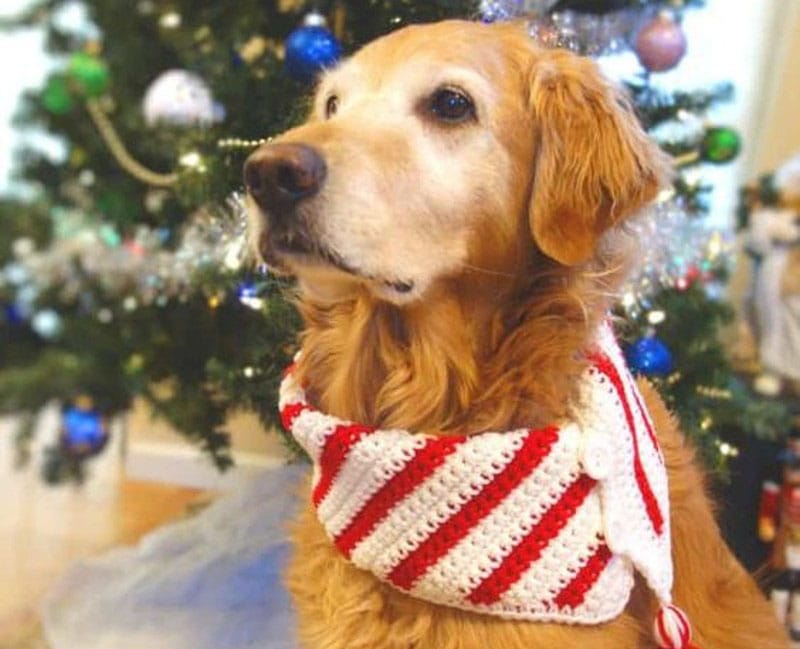
| Materials: | Yarn, buttons |
| Tools: | Crochet hook, scissors, needle and thread |
| Difficulty Level: | Beginner |
If you like to crochet, you can make this beautiful and functional DIY bandana scarf. It has an elegant, candy cane striped pattern, and it’ll help keep your dog warm during the cold winter months.
Once you finish crocheting the base of the pattern, you’ll sew on the buttons. You can also add an optional tassel to complete the look. The pattern can be adjusted easily so that the scarf is the right size for all kinds of dogs.
5. Golden Lucy Crafts Crochet Snowman Christmas Dog Bandana
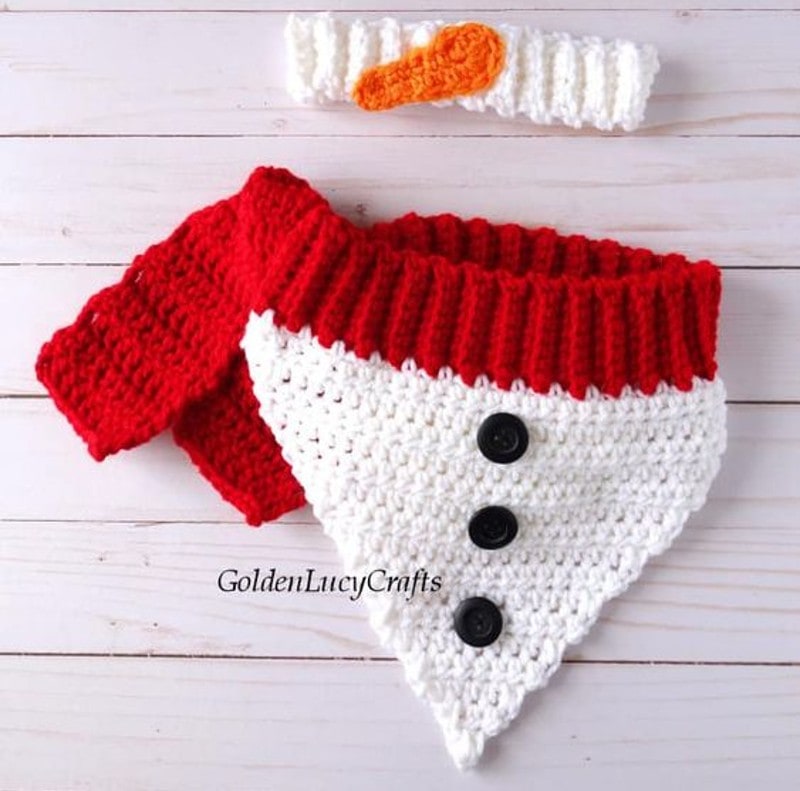
| Materials: | Yarn, buttons |
| Tools: | Crochet hook, scissors, needle and thread |
| Difficulty Level: | Moderate |
This cute snowman dog bandana comes with a matching headband pattern. The bandana has three buttons lined down the front, which can either be sewn or glued on with a hot glue gun. The top of the pattern has a red band that ties around the dog’s neck, and it has the appearance of a warm winter scarf.
The bandana is also easy to make. It just uses white yarn and orange yarn to give off the colors of a carrot nose.
6. Jo to the World Christmas Crochet Dog Bandana
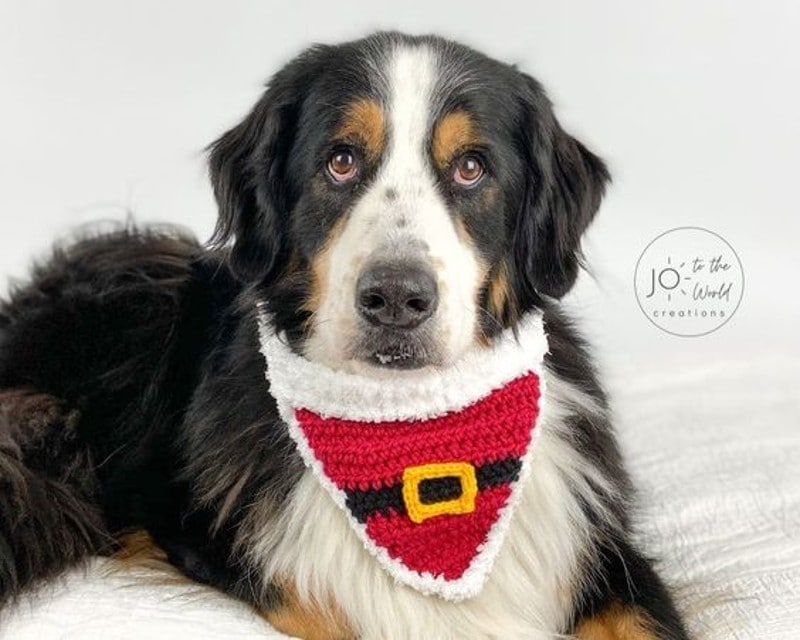
| Materials: | Yarn |
| Tools: | Crochet hook, hot glue gun, scissors |
| Difficulty Level: | Moderate |
This Christmas dog bandana has a similar design as the snowman bandana, but it has a Santa pattern. It has a bright yellow buckle in the center that’s made with yellow yarn, and the top of the bandana has a fluffy white band to resemble the edge of Santa’s hat.
The pattern only uses simple crochet stitches, so it’s easy for beginners to make, and it’s a quick and easy project for advanced crocheters. Once you get the hang of it, you can make several bandanas and give them as Christmas gifts to other pet owners.

Benefits of Wearing a Bandana
While bandanas are cute fashion accessories, they benefit dogs in other ways. One obvious benefit is that they keep dogs warm. Dogs with shorter coats may prefer wearing a bandana on colder days because they’re lightweight, and they also trap heat.
Some bandanas can provide signals and warnings to strangers. You can find a lot of bandanas with messages on them that indicate that a dog is blind, deaf, or aggressive to other dogs. Other bandanas help people know that dogs are in training or working as service dogs. So, if you prefer not to have people approach your dog while out on a walk, you can put a bandana with a message on your dog to politely let them know to leave your dog undisrupted.
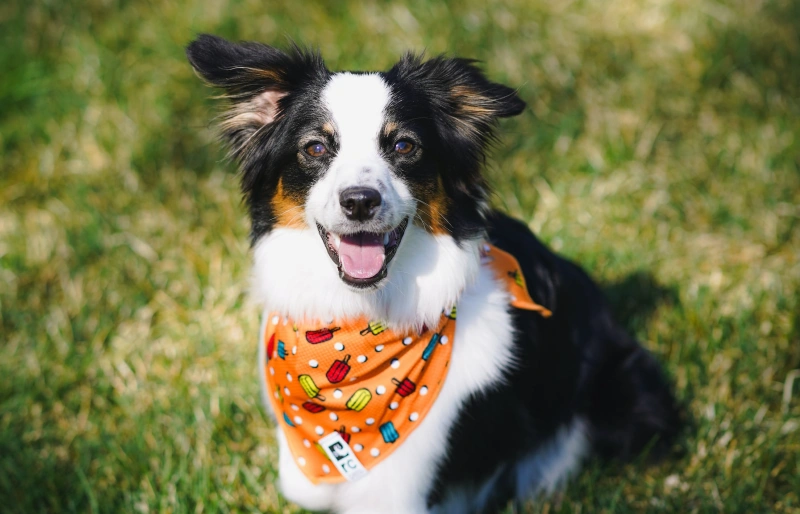
Some bandanas can be used for health purposes. Bandanas trap and hold fragrances well, so you can apply a calming spray to help soothe dogs with anxiety. Some anti-flea sprays can also be used on bandanas.
Bandanas can also benefit people, particularly allergy sufferers. They can help catch loose hairs and prevent spreading dog dander around the house.

Conclusion
Your dog doesn’t have to wear a sweater to be fashionable for Christmas. Bandanas are the perfect alternative, and you can get really creative with the embellishments and decorations to make them look festive and unique.
As Christmas is a holiday filled with traditions, bandana-making can be a new tradition that you can start this year. It’s a fun way to get in touch with your creative side, and they’re great presents to give to your dog and other dog parents.
Featured Image Credit: Martin Castro, Unsplash
Contents
- The 6 Top DIY Christmas Dog Bandanas
- 1. My Golden Thimble DIY Christmas Dog Bandana
- 2. Cooking for Dogs DIY Christmas Dog Bandana
- 3. DIY Passion Christmas Dog Bandana and Stocking Stuffer
- 4. Golden Lucy Crafts Crochet Christmas Candy Cane Dog Scarf
- 5. Golden Lucy Crafts Crochet Snowman Christmas Dog Bandana
- 6. Jo to the World Christmas Crochet Dog Bandana
- Benefits of Wearing a Bandana
- Conclusion

